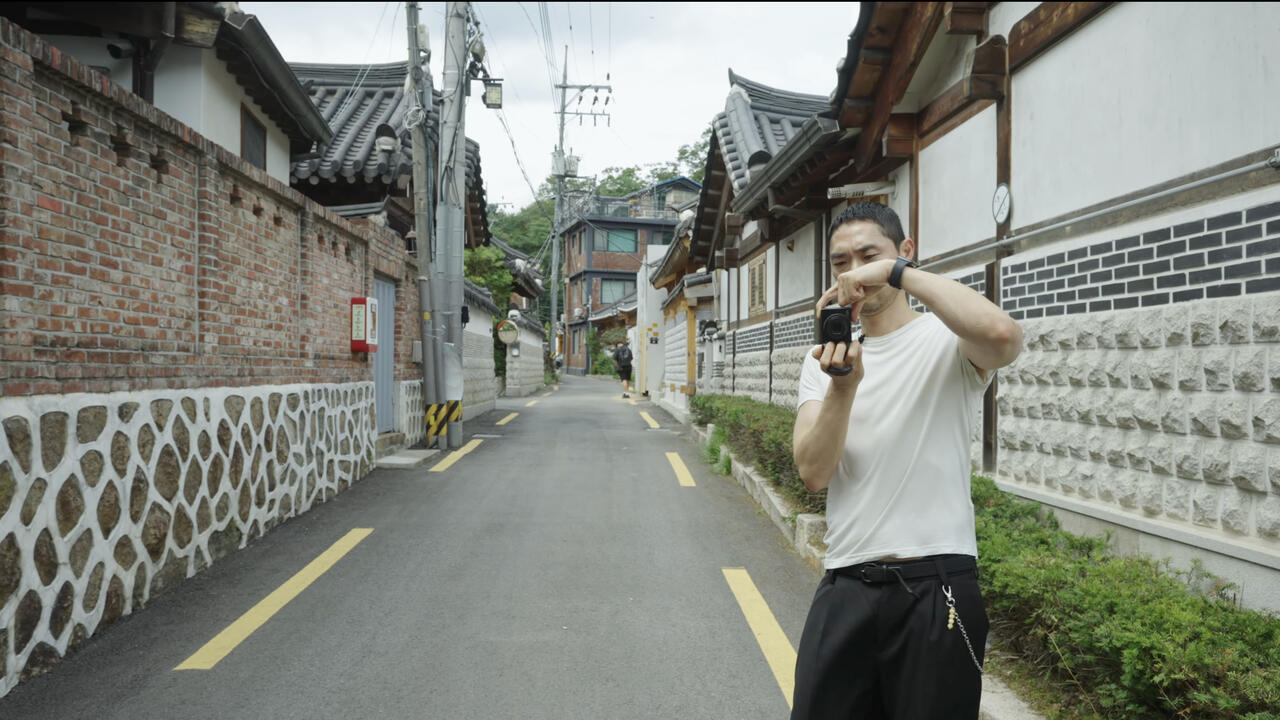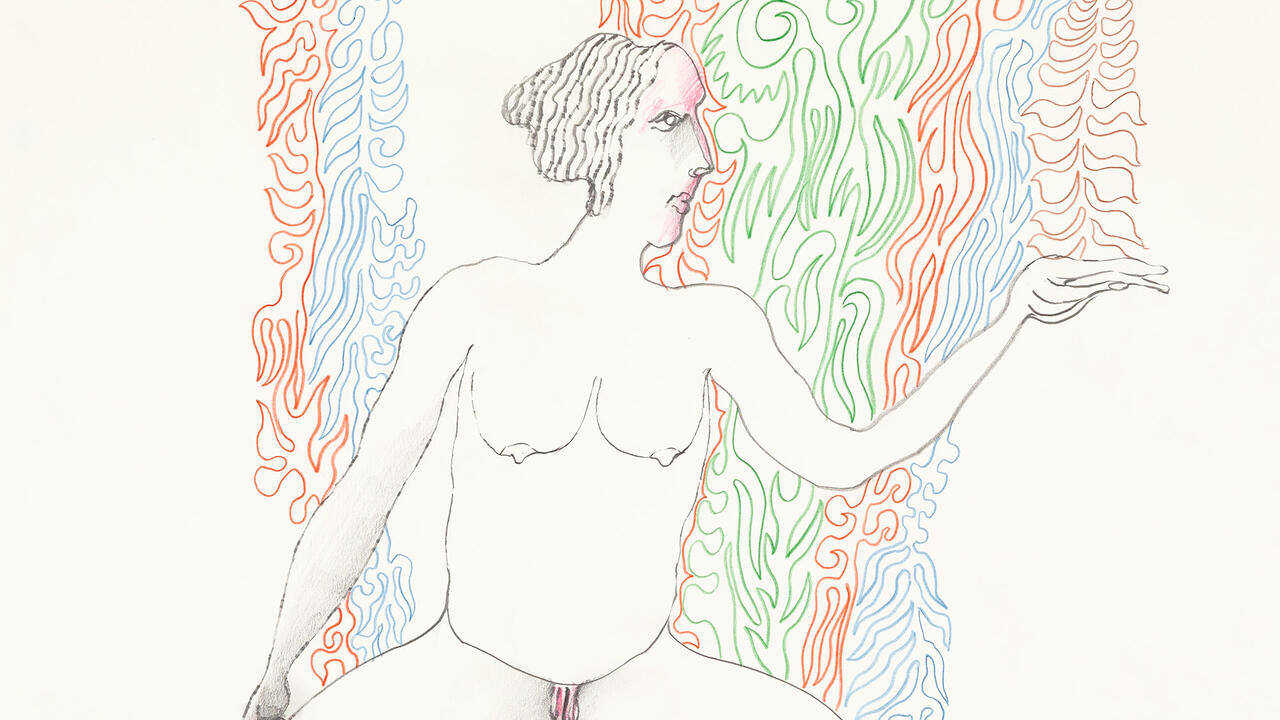Christian Tomaszewski

‘Damn, I didn’t know they were moving,’ I muttered to myself as I opened the door to Galeria Le Guern, only to find a dimly lit space, a couple of abandoned loudspeakers on cardboard boxes and a tangle of wires snaking about the floor. The staff were also absent, save for someone fumbling around in the other room. I was about to turn around when a high-pitched drumming sound blasted from the speakers.
‘Erased’, by Christian Tomaszewski, was the Polish-born US-based artist’s second show at Galeria Le Guern. Tomaszewski is known for his explorations of cinema-related material and forays into the future through nostalgic excavations of historical science fiction. Here, he presented new work that expanded on these themes. At the centre of ‘Erased’ were two videos screened in the gallery’s emptied-out office space, which Tomaszewski designed to be reminiscent of a vacant cinema or a deserted film set. In a highly original take on two icons of modern cinema – Volker Schlöndorff’s Die Blechtrommel (The Tin Drum, 1979) and David Lynch’s Blue Velvet (1986) – Tomaszewski took the notion of the director’s cut to a whole new level. For ERASED (The Tin Drum) and ERASED (Blue Velvet) (all works 2011–12), the artist rendered these motion picture classics, quite literally, speechless and characterless – which is not to say devoid of character.
The 20-odd-minute-long videos included original footage of interiors and locations from which Tomaszewski removed nearly all traces of life, digitally erasing both the actors and the dialogue. What is left are austere, desolate shots that possess a haunting stillness. The audio is no less important, with ambient sounds – footsteps, knocking, the creaking of an opening door – interrupted by occasional bursts of music or incomprehensible shouts, which work to heighten the viewers’ sense of estrangement. Both Blue Velvet, the bizarre story of an investigation into a small-town murder mystery, as well as The Tin Drum, about the trials and tribulations of Oskar Matzerath (Schlöndorff’s film was based on Günter Grass’s 1959 novel), have dense and intricate plots. Revisited by Tomaszewski, they become captivating, almost theatrical performances of furniture and household items. Although we never see the gruesome severed ear, the hinge of Lynch’s script, and are allowed only fleeting glimpses of the titular musical instrument that recurs in Grass’s original narrative, one can’t help but try to reconstruct the action. But, as we soon learn, the task is essentially impossible. Screened next to each other, on opposite walls, Tomaszewski’s versions leave one increasingly perplexed, frustrated and, not necessarily simply metaphorically, in the dark.
Peeling off the visual layers of landmark works of American and European cinema, Tomaszewski doesn’t so much dissect the structure of a film itself, as the whole cinematic experience – laying bare the way in which we make sense of what we see and hear. This is best illustrated in the third video in the exhibition, ERASED (Untitled), screened separately in the gallery’s staff room, possibly as a form of ironic coda. The looped footage from Stanley Kramer’s 1959 post-apocalyptic drama On the Beach shows a telegraphic device sending out a Morse code message tapped by an overturned Coca-Cola bottle. This cryptic message is one of the few sources of hope for survivors in world devastated by nuclear fallout. It is only when they reach the source of the signal that the survivors realize how wrong they were.

















